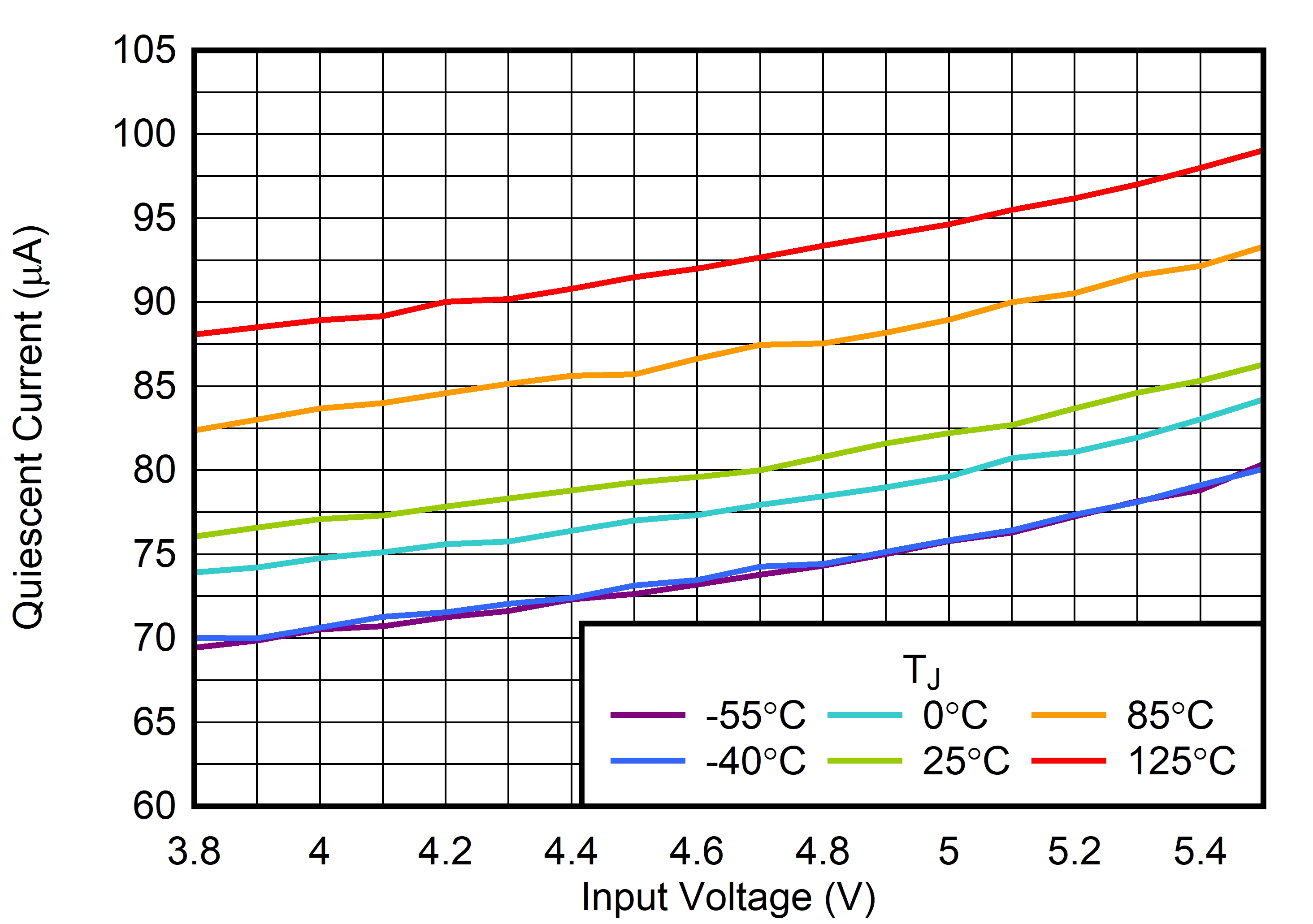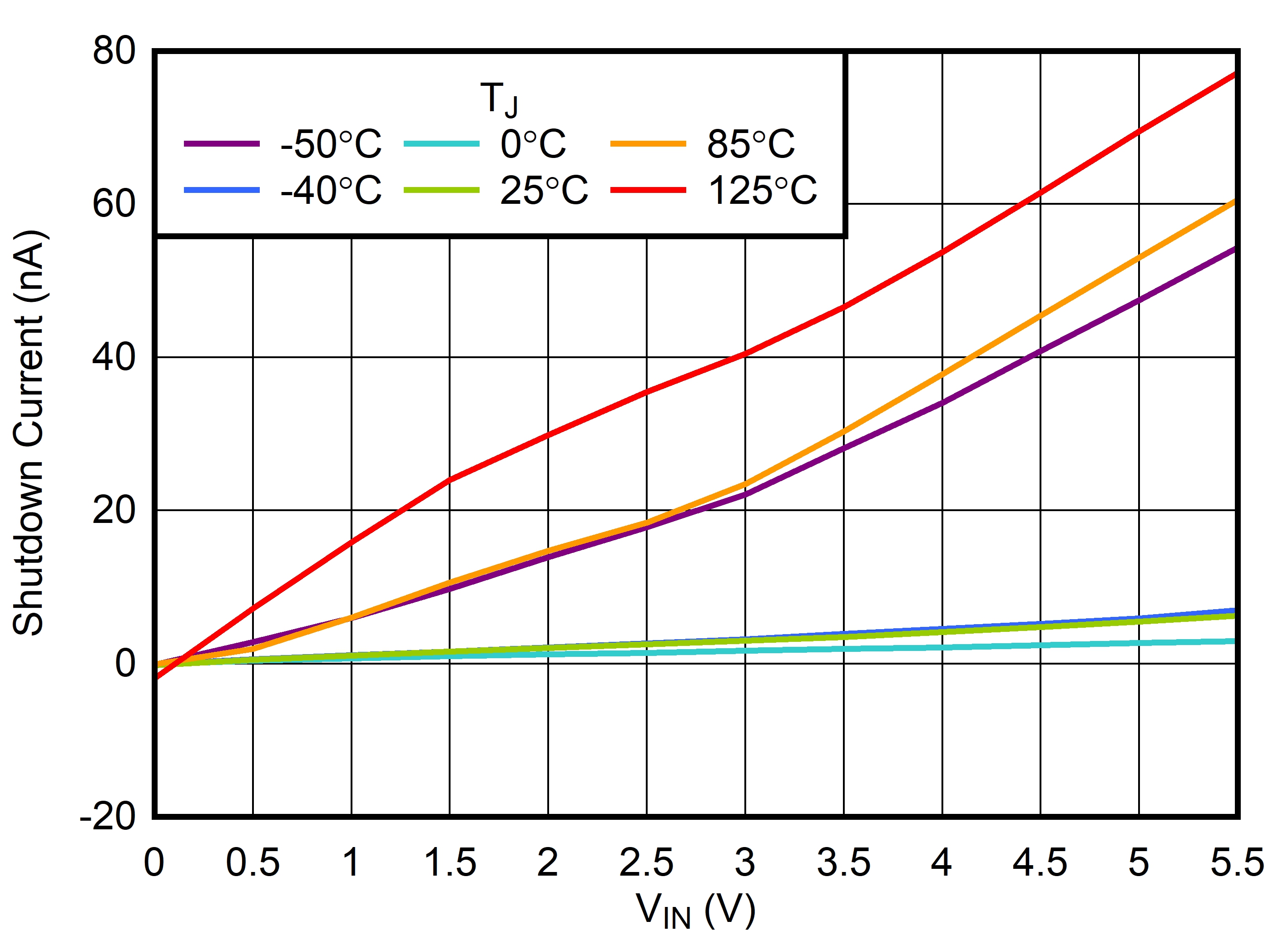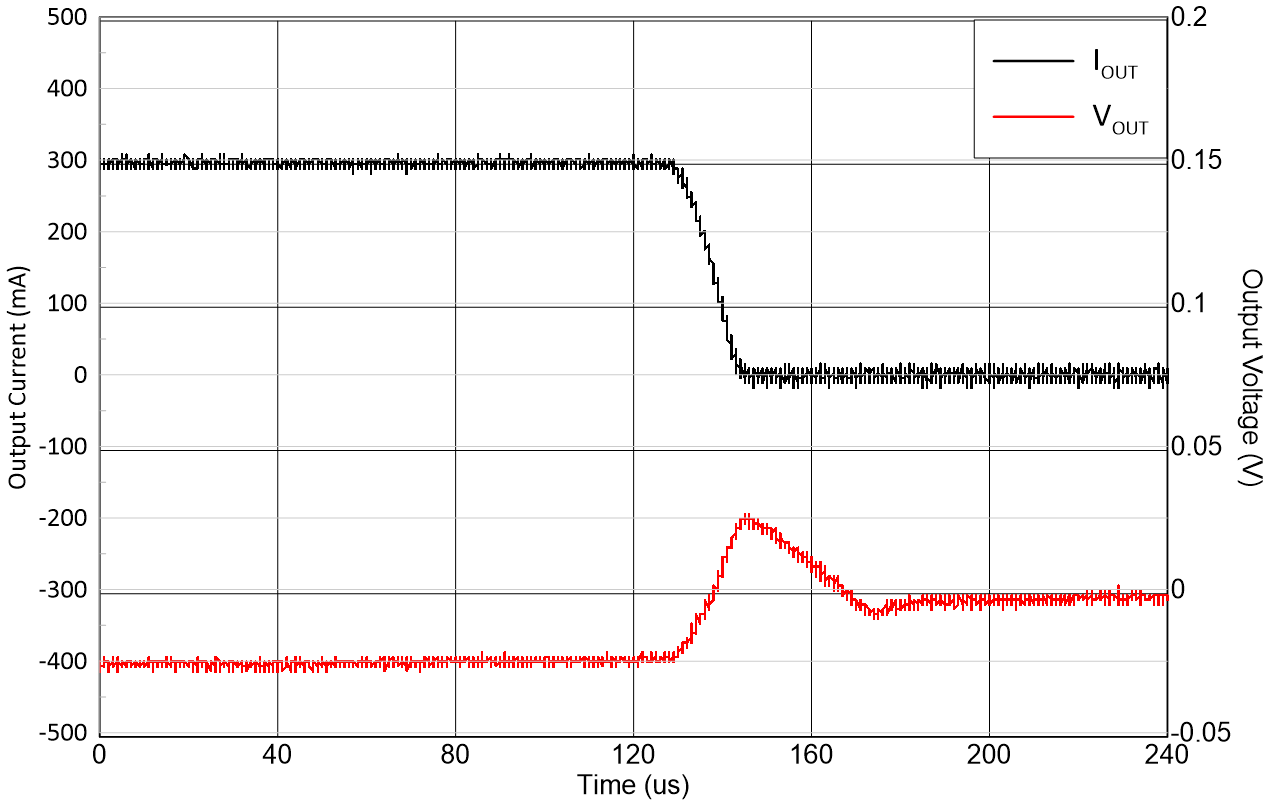SBVS424C December 2023 – October 2024 TLV773
PRODUCTION DATA
- 1
- 1 Features
- 2 Applications
- 3 Description
- 4 Pin Configuration and Functions
- 5 Specifications
- 6 Detailed Description
- 7 Application and Implementation
- 8 Device and Documentation Support
- 9 Revision History
- 10Mechanical, Packaging, and Orderable Information
5.7 Typical Characteristics
at operating temperature TJ = 25°C, VIN = VOUT(NOM) + 0.5V, IOUT = 1mA, VEN = VIN, and CIN = COUT = 1μF (unless otherwise noted)



| DBV package |



| VIN = VOUT(nom)
+ 1.0V, IOUT = 1mA to 300mA, tRISING = 10µs |

| VIN = VOUT + 0.3V to VOUT +1.3V |


| DBV package |

| DBV package |


| VEN = 0V |


| VIN = VOUT(nom)
+ 1.0V, IOUT = 300mA to 1mA, tFALLING = 10µs |

| VIN = VOUT(nom) + 1.0V |

| VIN = 4.3V, VOUT(nom) = 3.3V |